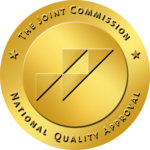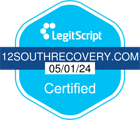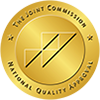Inhalant addiction is often overlooked but carries serious risks. Inhalants are everyday household products that release chemical vapors, which some people misuse to achieve a quick high. This misuse can lead to severe health problems, dependency, and even death. Recognizing the dangers of inhalants is crucial to addressing this issue effectively.

What Are Inhalants?
Inhalants are substances that release chemical vapors, which, when inhaled, produce mind-altering effects. These substances are not typically manufactured for recreational use but are found in everyday household, industrial, and medical products. Cleaning agents, aerosol sprays, glue, and paint thinners are common examples. Despite their intended purposes, these products can be misused to achieve a brief, intoxicating high.
The appeal of inhalants lies in their accessibility and affordability. Most products are legal, inexpensive, and easy to acquire, making them particularly susceptible to abuse, especially among younger individuals. While the effects may seem harmless initially, inhalant misuse carries significant health risks that can quickly escalate.
How Are Inhalants Used and Misused?
Legitimate Uses of Inhalants
Inhalants are designed for specific, practical purposes. Cleaning agents, such as solvents and degreasers, are staples in households and industries. Paint thinners and varnishes are essential for home improvement projects, while nitrous oxide serves as an anesthetic in medical settings. Even seemingly innocuous products like whipped cream dispensers have legitimate roles in daily life.
Misuse for Intoxication
However, the misuse of inhalants often begins with curiosity or experimentation. Individuals seeking a quick high may inhale vapors through various methods, such as sniffing directly from the container, soaking a cloth with the substance and inhaling it, or using a plastic bag to concentrate the fumes. Each method rapidly delivers chemicals to the brain, creating an immediate but short-lived euphoric sensation.
This misuse is not without consequence. Inhalant abuse can cause dizziness, confusion, and a sense of detachment from reality. While these effects may seem mild, repeated exposure to toxic chemicals significantly increases the risk of severe health complications.
The Dangers of Inhalant Addiction
Short-Term Effects
The immediate effects of inhalant misuse often include dizziness, nausea, slurred speech, and impaired coordination. These symptoms may seem minor but indicate the body’s reaction to toxic chemical exposure.
Long-Term Consequences
Prolonged misuse can lead to devastating long-term effects, including memory loss, hearing impairment, and irreversible damage to vital organs. The chemicals in inhalants are known to cause neurological damage, disrupting normal brain function and potentially leading to lifelong cognitive challenges.
One of the most alarming risks associated with inhalants is sudden sniffing death syndrome. This fatal condition occurs when irregular heart rhythms, suffocation, or other complications arise unexpectedly after inhalant use. Such outcomes highlight the unpredictable and dangerous nature of inhalant abuse.
Recognizing Signs of Inhalant Addiction
Behavioral Indicators
Inhalant addiction often manifests in behavioral changes that can be subtle at first but grow more apparent over time. Individuals may withdraw from family and friends, neglect responsibilities, and display irritability or sudden mood swings. Secretive behavior, such as hiding products or avoiding questions about unusual odors, can also be a red flag.
Physical Symptoms
Physical signs may include frequent nosebleeds, rashes around the mouth or nose, and chemical odors on breath or clothing. Chronic users often experience headaches, muscle weakness, and unexplained weight loss, which may indicate more serious underlying health issues caused by prolonged exposure to toxic substances.
Emotional and Social Impact
The ripple effects of inhalant addiction extend beyond the individual, impacting their loved ones and community. Strained relationships, financial difficulties, and legal troubles are common consequences that further isolate the person struggling with addiction.
Treatment for Inhalant Addiction
Detoxification
The first step in treating inhalant addiction is detoxification, which involves clearing the body of harmful chemicals. While withdrawal symptoms are generally milder compared to other substances, medical supervision ensures the process is safe and reduces discomfort.
Therapy and Behavioral Support
Behavioral therapies are critical in addressing the psychological aspects of addiction. Cognitive Behavioral Therapy (CBT) is particularly effective in helping individuals identify triggers, develop healthier coping mechanisms, and rebuild their lives. Motivational Interviewing can also encourage individuals to recognize the need for change and commit to recovery.
Building a Support Network
Recovery is not a solitary journey. Support groups like Narcotics Anonymous (NA) provide a sense of community and accountability. Sharing experiences with others who understand the struggle fosters hope and determination.
Family Involvement in Recovery
Family support is a cornerstone of successful recovery. Family therapy sessions educate loved ones about addiction dynamics and equip them to provide the right kind of support. Healing family relationships can create a stable and nurturing environment, improving long-term outcomes.
Professional Treatment at 12 South Recovery
At 12 South Recovery, we take a comprehensive approach to treating inhalant addiction. Our programs combine medical care, therapy, and holistic support tailored to each individual’s needs. We guide clients through every step of their recovery journey with compassion and expertise.
Preventing Inhalant Addiction
Education and Awareness
Raising awareness about the dangers of inhalant abuse is essential in preventing addiction. Educational programs in schools and community organizations can provide accurate information about the risks associated with misuse.
The Importance of Parental Guidance
Parents play a crucial role in prevention. Open communication about substance abuse, monitoring potentially misused household products, and setting positive examples through healthy behaviors are effective strategies.
Community Responsibility
Communities can work together to reduce inhalant abuse by advocating for responsible product use and ensuring access to support resources for those in need.
Contact Our Team
Inhalant addiction is a serious but preventable condition that requires attention and action. Understanding the risks, recognizing the signs, and seeking treatment are vital steps in breaking the cycle of addiction. If you or someone you love is struggling, know that help is available. At 12 South Recovery, we are committed to providing compassionate care and resources for those on their journey to recovery.
We encourage you to share this blog to raise awareness about inhalant addiction and its treatment options. Together, we can make a difference and help create a safer, healthier future for all.


















